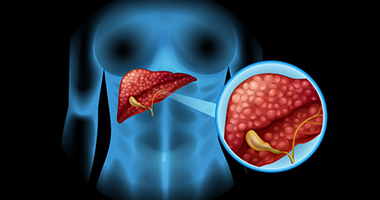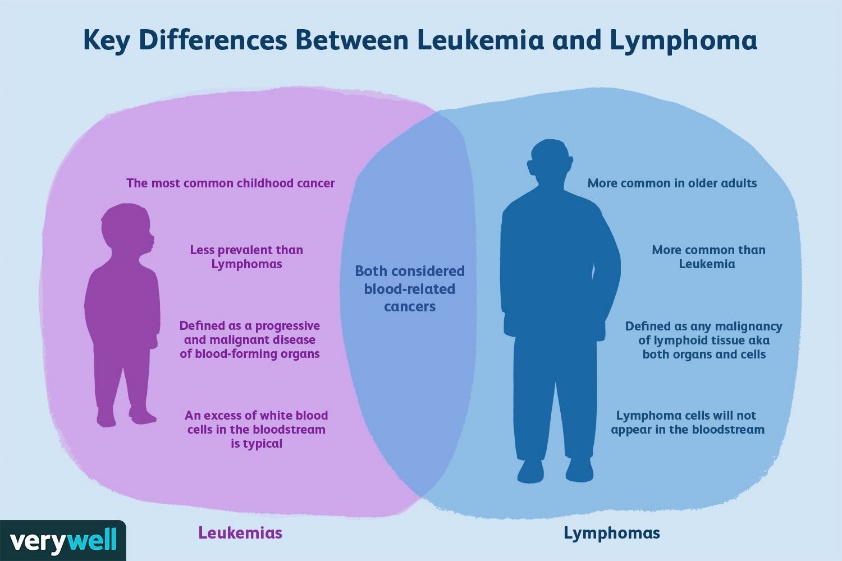Lymphoma of the Liver
Hepatic Lymphoma”, it is the type of lymphatic cancer that originates or spreads into the liver. Some factors can cause the start of this condition. The treatment varies according to the type and stages of the lymphoma. The term “lymphoma” is a cancerous lump that begins in the infection-fighting cells of the immune system referred […] Read More
Top Doctors For Lymphoma of the Liver Treatments
Top Hospitals For Lymphoma of the Liver Treatments
Lymphoma of the Liver
Table of contents
- What are the types of lymphoma of the liver?
- What are the risk factors associated with lymphoma of the liver?
- What are the complications associated with lymphoma of the liver?
- How is lymphoma of the liver diagnosed?
- How is lymphoma of the liver treated?
- What is the recovery rate of lymphoma of the liver?
- Symptoms
- Causes
- FAQ
“Hepatic Lymphoma” refers to a form of lymphatic cancer that starts from or spreads into the liver. Some factors can cause the start of this condition. The treatment varies according to the type and stages of the lymphoma.
The term “lymphoma” is a cancerous lump that begins in the infection-fighting cells of the immune system, referred to as the lymphocytes. Lymphocytes are the main white blood cells that are present in the lymph of the lymphatic system. The lymphatic system consists of the lymph nodes/glands, the spleen, the thymus, bone marrow, and other body parts.
With lymphoma, the lymphocytes, which are the infection-fighting white blood cells, begin to change their form, grow malignant and out of control, and can spread to other parts of the body and organs.
Lymphoma is popular with two main types:
- Hodgkin lymphoma, which is rare.
- Non-Hodgkin lymphoma is the common type. This type mostly consists of; B-cells lymphoma and T-cells lymphoma.
Both affect different types of cells, grow at different rates, and respond to treatment differently.

Since lymphoma affects white blood cells, it can start in any part of the body and, if not treated on time, can spread to other parts. Treatments, however, vary depending on the type of lymphoma and the stage of the sickness.
What is Lymphoma of the Liver?
Lymphoma of the liver, also called “Hepatic Lymphoma,” is the type of lymphatic cancer that originates or spreads into the liver. However, this condition is rare and mostly occurs in older men and women.

What are the types of lymphoma of the liver?
Hepatic lymphoma is often classified according to the mode of origination.
- Primary Hepatic Lymphoma
This type of liver lymphoma originates in the liver and then can spread into other parts of the body and organs. However, this type rarely occurs.
- Secondary Hepatic Lymphoma
This type of liver lymphoma is more common, starting from other parts of the body or organs and spreading into the liver. Lymphoma of the liver can either be Hodgkin’s or Non-Hodgkin’s lymphoma, or B-cells or T-cells lymphoma. The doctor will determine this as all of these types may have similar symptoms but need different treatment approaches.
What are the risk factors associated with lymphoma of the liver?
Lymphoma of the liver is rare, but still, it can affect people of all gender and race. Certain people are prone to be affected by the condition considering the following factors:
- Advanced age; the median age is drawn at 50 years.
- Certain genetic disorders like translocation or the juxtaposition of the regions of the chromosomes.
- Family history of immunity diseases, immunodeficiency, or cancer.
- A systematic disease.
- Viral infections such as Hepatitis B or C virus, Epstein-Barr virus, etc
- A weak immune system, immunodeficiency, or autoimmune disorders. It can be a result of HIV/AIDS or organ transplants.
- Smoking
- Certain drugs or medications.
- Exposure to industrial chemicals and radiation.
- Constant exposure to X-rays and CT scans can lead to this condition due to their radiation.
- People with professions that are mostly exposed to chemicals and radiation.
- People who already have lymphoma or any other blood-related cancers in remission can have a recurrence.
What are the complications associated with lymphoma of the liver?
Complications that are likely to arise from hepatic lymphoma include:
- For the primary condition, systematic involvement of other parts of the body and organs can lead to loss of function in those areas.
- Acute or complete liver failure.
- Hypertension
- Deteriorating immune system.
- More aggressive and fast-spreading lymphoma if not treated on time.
How is lymphoma of the liver diagnosed?
The patient should consult the doctor if they notice any abnormal signs and symptoms in the body. Delay in approaching the doctor will result in a delay in diagnosis and treatment. The doctor will first go through the medical and family history of the patient to know if there’s a risk factor present. To determine this aspect, the doctor will perform a physical examination, including palpating the liver and other parts of the body to find any abnormal signs.
Physical examinations do not fully make for diagnosis. Hence the doctor will have to run further tests to ascertain if it is truly the condition. There are several diagnostic tests, but popular ones include:
- Radiological imaging: MRI, CT scan, X-ray scan, and ultrasonography.

- Blood tests: complete blood count (CBC), liver function blood tests (LFT), absolute lymphocyte count, viral infection tests.
- Biopsy: liver tissue biopsy, core or open liver biopsy, bone marrow aspiration/biopsy.
- Fluorescence in situ hybridization (FISH): to detect genetic disorders by checking chromosome changes in the bone marrow or blood cells.
How is lymphoma of the liver treated?
The treatment plan for lymphomas often depends on the condition’s advancement stage. They go from mild to aggressive and are labeled stage 1 to stage 4. As these stages progress, the stronger the treatment and the lesser the rate of the condition going into remission. Therefore, treating every lymphoma must be done as early as possible before it advances further.
The doctor will look at the patient’s condition and decide which treatment is best for the patient. The common treatments include:
- Chemotherapy, which can be administered by pills, liquids, injection shots, or intravenously.
- Radiation therapy by using high radiation waves to kill the cancerous cells and their DNA.
- Surgery by removing the cancerous tumors/lumps from the liver.
- Bone marrow or stem cell transplantation when the lymphoma is not responsive to treatment or the chance of recurrence is high.
There are still targeted therapies and newer treatment options in recent times. Some of these options are developed to selectively kill the cancer cells but are in clinical trials. The doctor can suggest them.
Supportive treatments such as blood transfusion, antibiotics, steroids, and anti-nausea medications can be used in combination with the treatments to aid them and combat the symptoms of the condition.
What is the recovery rate of lymphoma of the liver?
The earlier it is diagnosed and treated, the faster the recovery. The recovery rate cannot be determined as different people with different body types have their rates of recovery from lymphoma. It can take months for it to go into remission, depending on the type of treatment used.
Lymphoma is never cured but goes in remission and can reoccur, so it is important to take certain precautions to prevent the condition. They include:
- Avoid exposure to industrial chemicals that can increase the risk of cancer.
- Use protective gear when coming in contact with radiation.
- Start taking early treatments for autoimmune diseases and viral infections.
- Quit smoking
- Maintain a healthy lifestyle.
Symptoms

The signs and symptoms of hepatic lymphoma often depend on the type of cancer (if it is primary or secondary). Secondary hepatic lymphoma, the most common, often has symptoms related to the parts from where it started and continues to spread to the liver.

But in general, the symptoms and signs may include:
- Abdominal pains
- Liver enlargement due to the mass of cancerous lumps in the liver.
- Headaches
- Fever
- Excessive night sweats
- Nausea and vomiting
- Fatigue
- Weight loss
- Loss of appetite
- Anemia
- Low blood pressure
- The frequent occurrence of infections
- If it results in liver failure, easy bruising, and bleeding.
Causes
It is generally known that the mutation of infection-fighting lymphocytes of the white blood cells, making them grow rapidly out of control, forming malignant lumps, leads to lymphoma.
However, the exact cause of lymphoma of the liver is idiopathic (cause not known). We can relate this condition to certain risk factors that are prone to developing the condition.
FAQ
Lymphoma is cancer that begins in the infection-fighting lymphocytes of the white blood cells, while Leukemia is cancer that begins in the blood-forming cells in the bone marrow.
Picture Courtesy: verywellhealth
Lymphedema has nothing to do with lymphoma. The collection of fluid forms in body tissues, which occurs when there is damage or blockage in the lymph system.
Avoid taking unpasteurized milk, cheese, juices, meat, or eggs. Ensure to cook raw meat, eggs, and vegetables before eating. Avoid thawing frozen items like water, ice cream, and yogurt.
The most aggressive form of lymphoma is the less common type of B-cell lymphoma called the Burkitt lymphoma. This lymphoma is the fastest-growing of all lymphoma.
The survival rate of people with non-Hodgkin lymphoma is measured at 5 years, considering that 72% of people with NHL live within this rate. But survival rates can vary depending on the types and stages of the lymphoma.

































































































